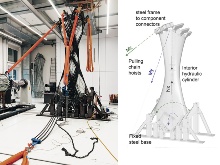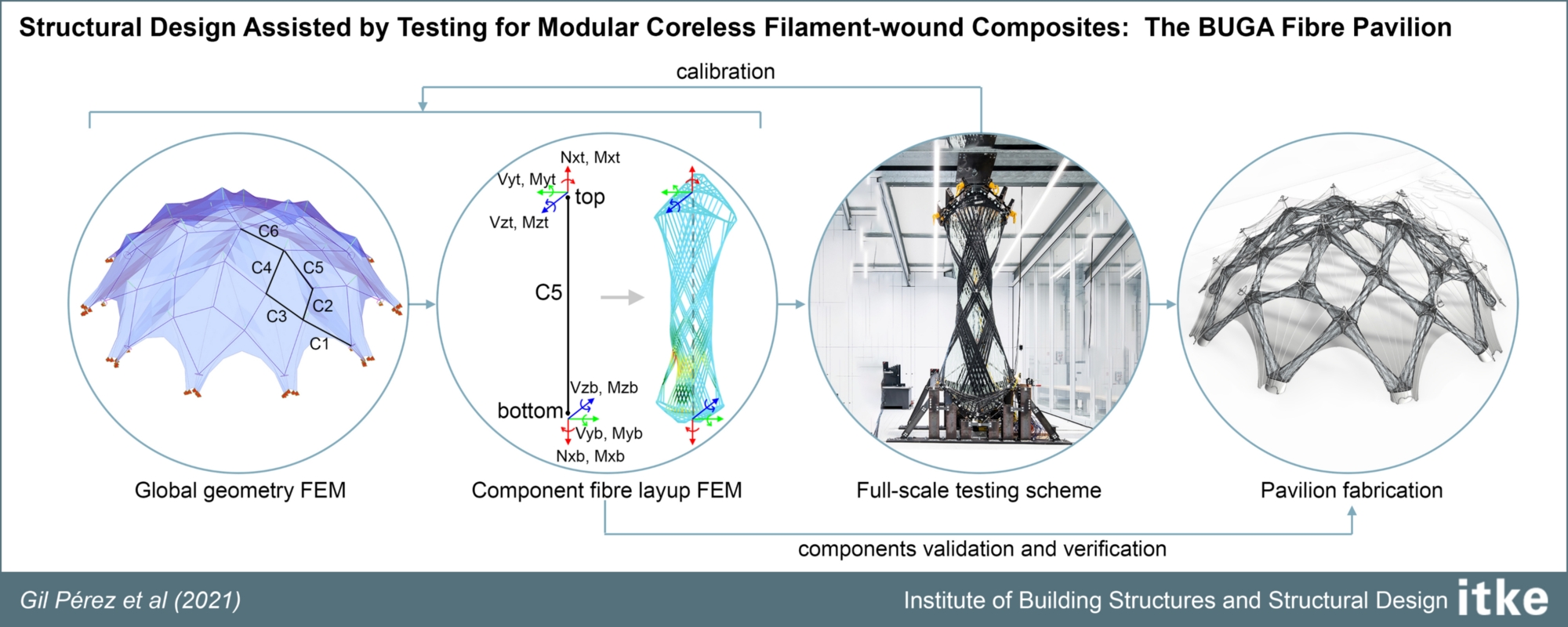We are delighted to announce that a paper on the BUGA Fibre Pavilion – “Structural design assisted by testing for modular coreless filament-wound composites: The BUGA Fibre Pavilion” – has been published in the journal Construction and Building Materials.
Highlights:
- The BUGA Fibre Pavilion is the largest coreless filament-wound fibre composite structure.
- The methodology used presents an excellent example of experimental structural design.
- The methods combine structural simulation with physical prototyping and testing.
- The FEMs were used as a design tool rather than a way to predict failure.
- The component's structural integrity was proved through testing of single prototypes.
Abstract
The BUGA Fibre Pavilion was built in 2019 in the Bundesgartenschau (National Gardening exhibition) at Heilbronn, Germany. The pavilion consists of modular fibre-polymer composite components made out of glass and carbon fibres with an epoxy resin matrix. The fabrication technique employed, called coreless filament winding (CFW), is a variant from conventional filament winding where the core is reduced to minimum frame support. The fibres are wound between these frames, freely spanning and creating the resulting geometry through fibre interaction. For the structural design of these components, conventional modelling and engineering methods were not sufficient as the system cannot be adequately characterized in the early stage. Therefore, a more experimental design approach is proposed for the BUGA Fibre Pavilion, where different levels of detailing and abstraction in the FE simulations are combined with prototyping and structural testing. This paper shows the procedure followed for the design and validation of the structural fibre components. In this process, the simulations are used as a design tool rather than a way to predict failure, while mechanical testing served for the verification and validation of the structural capacity.
Related Links:
- Full paper in Construction and Building Materials
- Research Project 11 – Long-Span Fibre Composite Structures
- BUGA Fibre Pavilion



